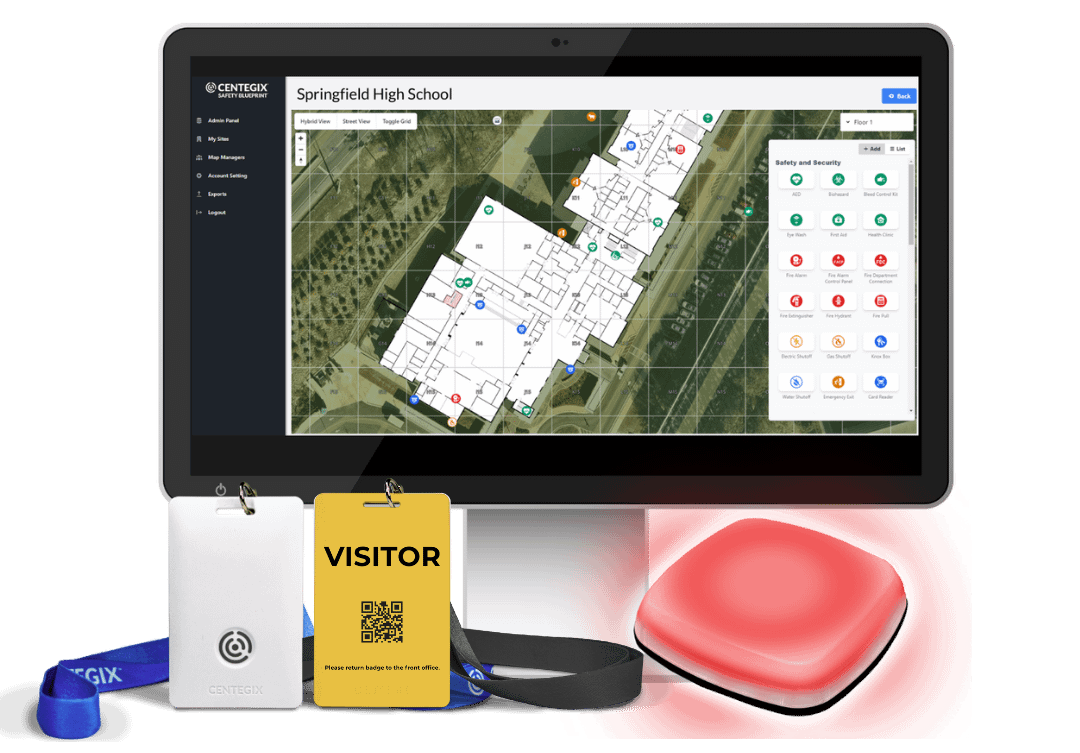Behavioral health units are high-risk environments for healthcare workers. In general, healthcare professionals experience high rates of workplace violence; they are five times more likely to sustain a workplace violence injury than other professions. Behavioral Health units are at increased risk of experiencing violence in healthcare, with emergency departments and psychiatric units being more likely to experience workplace violence than other settings.
Workplace Violence in Behavioral Health
The National Institute for Occupational Safety and Health (NIOSH) defines workplace violence as violent acts, including physical assaults and verbal threats, directed toward persons at work or on duty. In healthcare environments, acts of violence can range from verbal abuse to violent physical assaults. In many of these events, patients and families are impacted by high emotional stress. This can result in unpredictable behaviors.
Organizational and systemic factors can also increase risk for healthcare workers. These include:
- high-stress work environments
- staffing shortages
- lack of organizational policies and staff training
- overcrowding
- long wait times
- perceived lack of information
In behavioral healthcare settings, many of these factors are prevalent. In particular, the unpredictability of patient behavior due to altered mental status. According to Occupational Safety and Health Administration (OSHA) Ohio Area Director Larry Johnson, “Behavioral healthcare workers can be exposed to risks when treating patients who suffer with conditions that can lead to violent outbursts.” This can include substance abuse, delirium, dementia, Alzheimer’s, and more.
At the 2024 American Psychiatric Association (APA) Meeting, Dr. Laura T. Safar, Vice Chair of Psychiatry and Director of the Neuropsychiatry and Behavioral Neurology Fellowship at Lahey Hospital and Medical Center, Harvard University, shared that 40 percent of psychiatrists reported physical assault in psychiatry settings, with higher reported incidents of violence in inpatient facilities versus outpatient.
Impacts of Violence on Behavioral Healthcare Workers
According to a Joint Commission report, the prevalence of workplace violence in behavioral healthcare settings has increased in recent years. These incidents contribute to staff shortages and burnout. When behavioral healthcare workers become overworked and under-resourced, their mental health is negatively impacted.
A study published in Frontiers in Public Health found that violence against healthcare workers can decrease job satisfaction and retention, increase leave days, impair work functioning, trigger depression and post-traumatic stress disorder, decrease ethical values, and more.
When a behavioral healthcare worker experiences workplace violence, they are less able to provide high-quality patient care. Annals of Medicine and Surgery recently published a study concluding that “the negative implications of such widespread violence in healthcare sectors have a significant impact on the delivery of healthcare services, including a decline in the quality of care delivered, increased absenteeism, and health workers’ decision to leave the field. As a result, the number of health services available to the general public will be limited, resulting in increased healthcare costs due to resource constraints.”
How Organizations Prevent and Mitigate Violence
To support healthcare workers and their mental health, the Joint Commission developed a framework of requirements to guide behavioral healthcare organizations in creating and reinforcing workplace violence prevention efforts.
The Joint Commission requirements focus on:
- leadership oversight
- policies and procedures
- reporting systems
- data collection and analysis
- post-incident support and follow-up
- staff training and education
By focusing on each of these areas, healthcare organizations can create a culture of safety that helps protect workers and prevent burnout.
A key element of creating this culture is an organizational commitment of resources to address safety concerns. Behavioral healthcare workers need to perceive that administrators are sympathetic to their safety concerns and are taking steps to address them. To do their job effectively, staff must feel safe, physically and psychologically. The Joint Commission advises leaders to cultivate safer work environments by developing clear workplace violence protocols and addressing staffing shortages and turnover. Healthcare organizations should also gather data about violent incidents from all available sources, including databases, security, human resources, and employee surveys. Organizations should use this data to inform quality improvement initiatives to reduce incidences of workplace violence.
Dr. Safar shared similar guidance with APA attendees. “A strong violence prevention climate has been shown to be a protective factor against workplace violence in hospital settings,” said Safar. “A safety culture across the institution should include a [policy] for workplace violence prevention, continuous monitoring, education and training on safety measures and de-escalation strategies, and incident reporting systems.”
The Role of De-escalation in Workplace Violence Prevention
De-escalation is central to mitigating workplace violence in behavioral healthcare settings. De-escalation combines strategies, techniques, and methods to reduce a patient’s agitation and aggression. Strategies focus on:
- Verbal communication
- Body language
- Environmental controls
- Patient-centered care
When used effectively, these measures may help minimize patient frustration and aggression, defuse potentially violent situations, and decrease the use of restraints.
Safety protocols that enable staff to request help without escalating a tense situation are critical to creating a culture of safety. Behavioral healthcare staff should be equipped with safety technology that empowers them to request support discreetly so they can begin de-escalation techniques confidently, knowing help is on the way. Silent methods of signaling for help also allow staff to summon support without increasing noise or sensory stimulation that can exacerbate patient aggression.
Leveraging CENTEGIX Technology to Create a Culture of Safety in Behavioral Healthcare
The CENTEGIX Safety PlatformTM helps healthcare organizations create a culture of safety that prevents and mitigates workplace violence in healthcare. It’s the foundation of a layered safety plan in behavioral health units that includes these functionalities:
- CrisisAlertTM, a discreet, wearable duress button for healthcare workers
- Dynamic digital mapping and precise locating capabilities via Safety BlueprintTM
- Healthcare Visitor Management system that allows administrators to authorize all visitors and locate them while on campus
CrisisAlert
CENTEGIX CrisisAlert enables staff to request help discreetly via a wearable duress button. CrisisAlert does not require workers to leave a patient’s bedside or room, and they do not initiate loud noises or lights that could exacerbate a patient’s aggression. A staff member can alert designated responders that they need support at the push of a button. This empowers staff to implement de-escalation techniques while responders are en route to support them.
Safety Blueprint
CENTEGIX Safety Blueprint is an intelligent response mapping solution designed to help healthcare organizations optimize incident response and safety planning. CENTEGIX Safety Blueprint is the only dynamic digital mapping solution that empowers users to:
- Reduce incident response time. Responders see the precise location of an incident and who needs help.
- Gain situational awareness. Engage cameras at the location of the event to understand the severity.
- Visualize equipment and assets. See physical locations of resources without digging through spreadsheets or hard copies.
Visitor Management
Behavioral health units contribute to a culture of safety by ensuring that visitors have been vetted and authorized. Numerous visitors—caregivers, family members, friends, contractors, and visiting staff—enter healthcare facilities daily. The CENTEGIX Visitor Management system checks in and screens all visitors before they enter behavioral health facilities and can locate them during their stay. This information assures staff that the people they encounter on campus are permitted to be there. By implementing visitor management protocols, healthcare leaders indicate their support for staff members’ safety and well-being.
To learn more about how CENTEGIX can help create a culture of safety in your behavioral healthcare organization, schedule a demo today.












